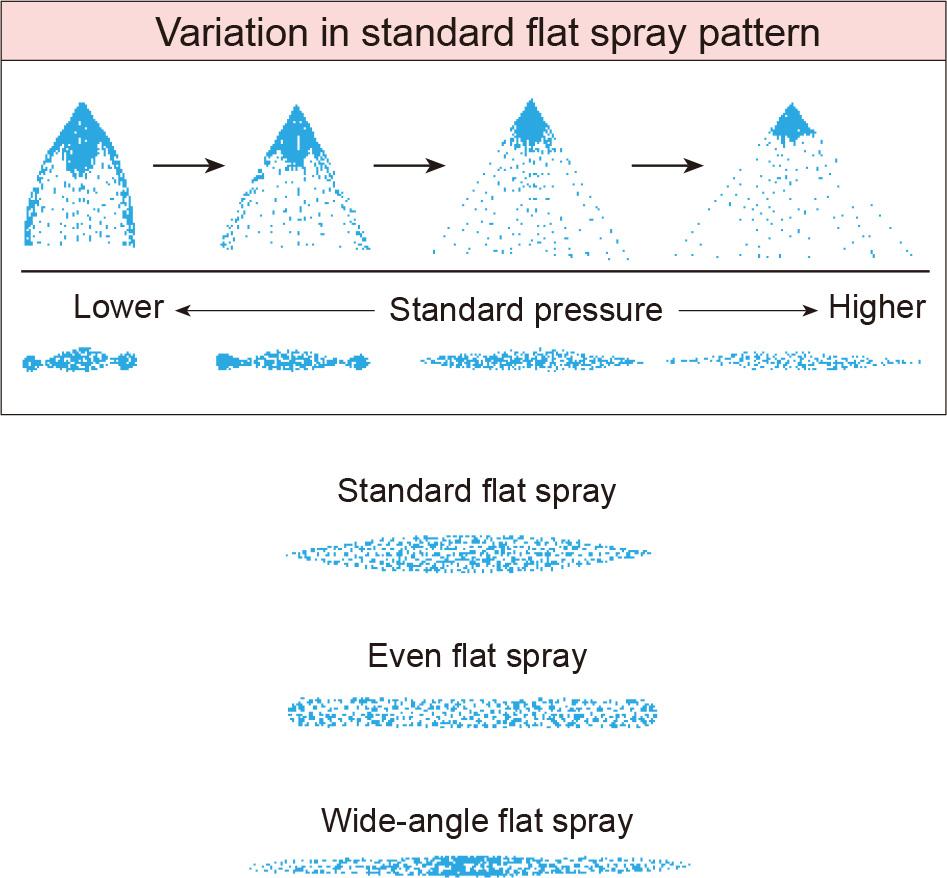Table of Contents
- Understanding Spray Patterns and Their Practical Applications
- Detailed Characteristics of Stream, Fog, and Gel Sprays
- Choosing the Right Spray Pattern for Your Needs
- Expert Tips for Maximizing Efficiency and Safety with Each Spray Type
- To Wrap It Up
Understanding Spray Patterns and Their Practical Applications
Mastering the nuances of spray patterns empowers users to optimize performance across various scenarios. The stream pattern delivers a concentrated, powerful jet ideal for reaching distant targets or penetrating tough surfaces. This precision makes it the go-to for tasks demanding accuracy, such as applying insecticides on specific plants or targeting hard-to-reach crevices. In contrast, the fog pattern creates a fine mist that disperses widely, maximizing coverage and minimizing runoff. Its ability to envelop surfaces evenly makes it especially valuable for treating large areas quickly and efficiently, perfect for cooling, humidifying, or applying pesticides uniformly over crops or foliage.
On the other hand, the gel pattern offers a unique blend of adhesion and control by delivering a thicker, sticky substance that clings to surfaces. This characteristic reduces wastage and prevents substances from dripping or evaporating too quickly, making gels ideal for applications such as pest control on vertical surfaces or applying protective coatings on plants. Each pattern’s distinctive behavior unlocks different practical advantages, and understanding these allows professionals – from gardeners to industrial workers – to tailor their approach for improved efficacy, reduced waste, and enhanced safety.
Detailed Characteristics of Stream, Fog, and Gel Sprays
Each spray pattern serves a unique purpose shaped by its particle size, dispersion, and delivery method. A Stream spray is characterized by a powerful, concentrated flow of liquid, delivering precision and depth. This type is ideal for tasks requiring direct application, such as cutting through grime or targeting specific spots in gardening. Its concentrated nature allows for minimal wastage and strong impact, making it perfect for hard-to-reach areas or when you need a focused approach.
In contrast, the Fog spray releases liquid in a fine mist, producing tiny droplets suspended in the air. This pattern excels in evenly covering large surfaces without soaking them, commonly found in air fresheners or cooling systems. It offers quick evaporation and lightweight application, enhancing absorption without saturation. Meanwhile, the Gel spray combines the benefits of tangibility and adherence with its thick, viscous texture that clings firmly to surfaces. This makes it particularly effective for sanitizers or treatments where prolonged contact is necessary to maximize efficiency.
- Stream: Concentrated, precise, minimal waste
- Fog: Fine, even coverage, fast drying
- Gel: Thick, adhesive, long-lasting effect
Choosing the Right Spray Pattern for Your Needs
Selecting the ideal spray pattern hinges largely on the specific task and environment you’re working in. For example, if precision is your priority-perhaps when applying pesticide to a small garden patch or targeting a particular area-it’s best to lean towards a stream spray. Streams deliver a concentrated flow, allowing you to cover distances accurately and reduce overspray. In contrast, when the goal involves even coverage over a broader area, such as moisturizing plants or disinfecting surfaces, a fog spray becomes invaluable. Its mist-like quality ensures a fine, widespread distribution that’s gentle yet effective.
Meanwhile, choosing a gel spray suits tasks where you need the substance to adhere to surfaces without rapid runoff. This characteristic proves essential for applying thicker solutions, like insecticidal gels or adhesive coatings, ensuring prolonged contact and enhanced effectiveness. To summarize, keep these considerations in mind:
- Stream: Precision targeting, distance coverage, minimal overspray
- Fog: Wide coverage, gentle application, suitable for delicate surfaces
- Gel: Surface adherence, longer contact time, effective for viscous materials
Expert Tips for Maximizing Efficiency and Safety with Each Spray Type
Maximizing the effectiveness of each spray type hinges on understanding their unique characteristics and applying them thoughtfully. When working with stream sprays, focus on distance and precision. These sprays are designed to cover long ranges with a concentrated flow, making them ideal for targeting specific spots without wastage. Maintain a steady hand and aim in short bursts to avoid overapplication, which can lead to surface damage or runoff. Wearing protective gloves and eyewear is essential, as the force of the stream can cause splashback or unintended contact with skin.
In contrast, fog sprays deliver a fine mist that blankets surfaces, maximizing coverage in tight or intricate spaces. To harness their full potential, hold the sprayer at an appropriate distance (usually 12-18 inches) and apply in sweeping motions to ensure even distribution. Fog sprays demand caution to prevent inhalation; always use them in well-ventilated areas or wear a mask for respiratory safety. Gel sprays, with their heavy, viscous consistency, offer excellent adhesion on vertical surfaces or in hard-to-reach areas. Apply gels slowly and methodically, avoiding quick jerky movements that can cause drips or uneven layering. Clean tools and containers thoroughly after use to maintain equipment longevity and hygiene.
- Stream: Use short bursts, aim precisely, wear protective gear
- Fog: Maintain appropriate distance, work in ventilated spaces, avoid inhalation
- Gel: Apply slowly, prevent drips, clean tools immediately
To Wrap It Up
In mastering the nuances of spray patterns-stream, fog, and gel-you equip yourself with the knowledge to select the right application for any task, whether it’s for gardening, cleaning, or industrial uses. Each pattern serves a distinct purpose, influencing coverage, precision, and efficiency. By understanding these differences, you can enhance your results, minimize waste, and work smarter. Keep these insights in mind the next time you reach for your sprayer, ensuring each spray hits the mark with confidence and effectiveness.Check Our Other Blogs
- StunGun – Your Trusted Source for Stun Guns, Laws, and Self-Defense Tips
- PepperSprayLaws – Your Trusted Resource for Pepper Spray Information
- StunGunLaws – Your Trusted Guide to Stun Gun Legality and Safety




